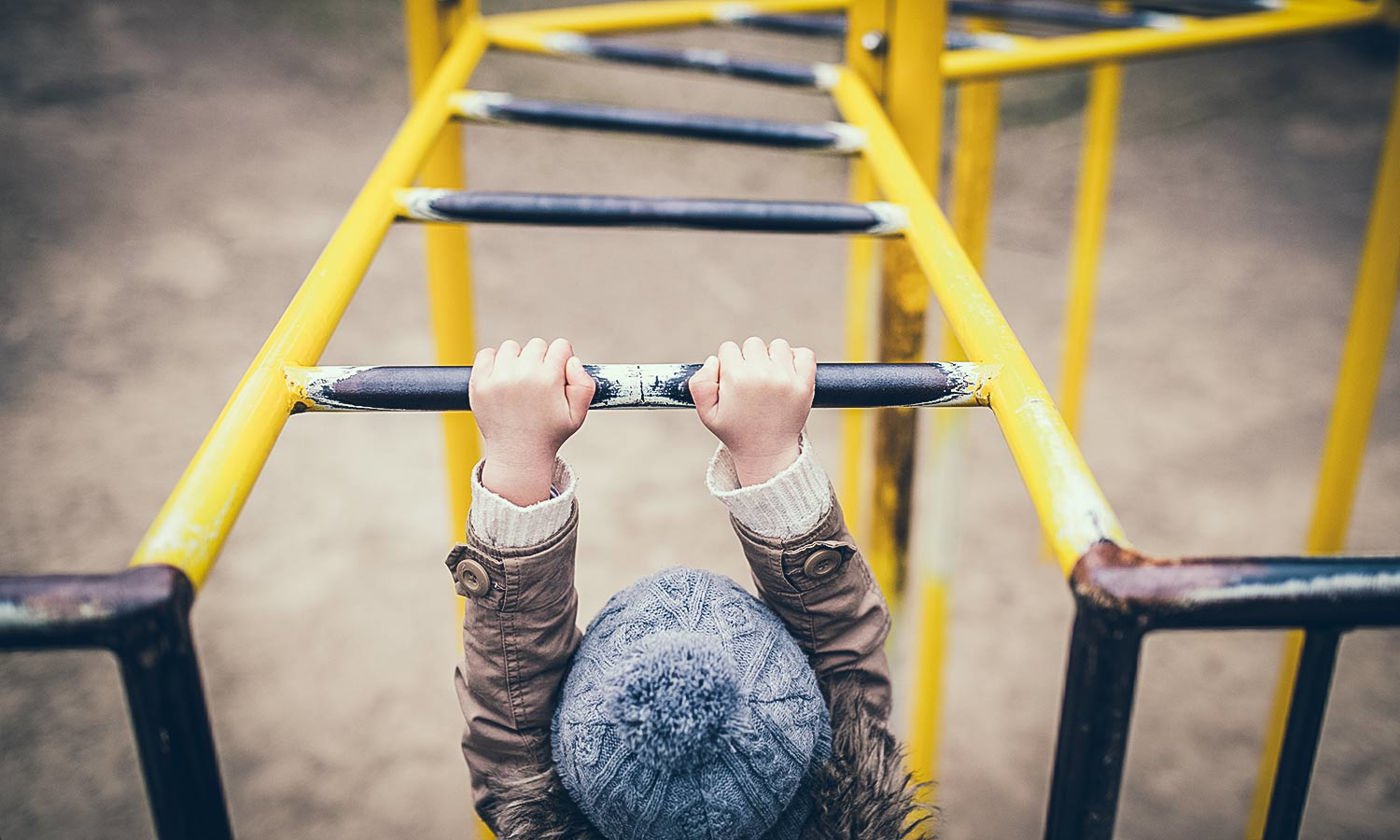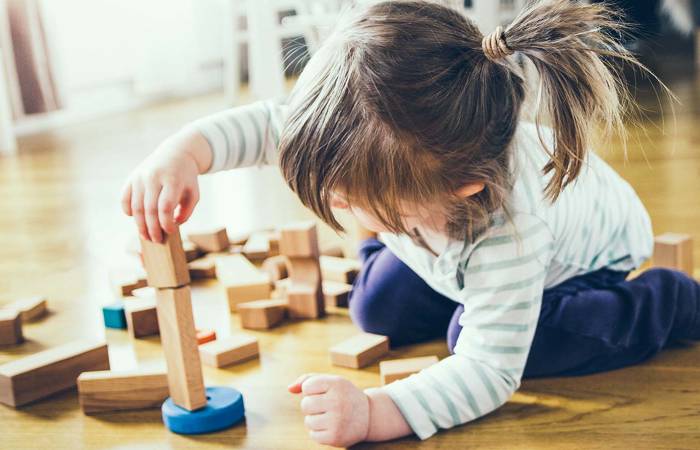Like what you see?
Sign up to receive more free parenting advice.
Thank you for subscribing to our newsletter!
Early Learning

Credit: iStock.com/Hakase_
From the minute our children come into the world, we feel a natural desire to protect them.
When they start crawling, walking and then running, parents can find themselves becoming the ‘fun police’.
“No, don’t climb up there, it is too high and you might fall.”
“Don’t run on the footpath, what if you trip and fall and hurt yourself?”
“No, you cannot play with that, it is too dangerous.”
Is there a reason our children insist on walking on the very edge of a footpath, instead of the middle? Or can’t resist climbing a wall or a tree?
According to researchers, who define this play as risky or adventurous play, the answer is yes.
“Risky play builds confidence and a sense of self belief in their own decision making,” says Sue Robb, Goodstart Early Learning’s General Manager Pedagogy and Practice.
“[They are making] life lessons that will help them as they grow and develop.”
It is our duty as early years providers to ensure that the risks we expose children to, are as safe as they possibly can be so children can take calculated risks.Sue Robb
Stay up to date with the latest news and articles from First Five Years
Thank you for subscribing to our newsletter!
What is risky play?
“Risky play is when the child’s skills exceed the challenges provided by the available equipment,” says Ellen Beate Hansen Sandseter, a Norwegian Professor of Physical Education and Health within Early Childhood Research.
Through Ellen’s extensive research, she has found six categories of risky play that children engage in.
The first, playing with heights.
“If there is anything around that could be climbed, children will want to climb it. Whether trees, playground climbers, big rocks, steep slopes, hillsides etc,” says Ellen.
Second, playing with high speed.
Ellen gives the examples of riding a bike at high speed; risking crashing into something or someone; or simply sliding and falling off.
Third, playing with harmful tools.
Fourth, playing near dangerous elements, like “playing on top of high and steep cliffs, playing near deep water by the seaside or tumultuous playing near a burning fire pit,” says Ellen.
Fifth, rough-and-tumble which, Ellen says, is “play fighting, fencing with sticks/branches or play wrestling”.
“This type of play is high-risk in the sense that it involves a fine balance between play and real fighting, and the margins are small for one of the children becoming hurt ‘for real’.”
Finally, play where the child can ‘disappear’ or get lost.
Ellen explains, “it is where children experience a feeling of risk when they are given the opportunity to ‘cruise’ on their own and explore unknown areas where the danger of getting lost is present.”
Unfortunately for our children, the opportunity for risky play seems to be decreasing compared to previous generations.
“The development is in the direction of more and more protection and more focus on safety,” she says.
“In my research, I have noted many restrictions on and limitations to children’s play and activities are now common.”
How does risky play work?
“Everyone has a built-in policeman that lets them know their risk appetite,” explains Sue.
“Children have this too and they know when they don’t want to climb any higher or travel further away from their parents.
“We need to support children to thrive as learners to take a risk, learn from their mistakes and be bold in what they want.”
Ellen says, “one of the benefits of children's engagement in risky play is the ‘lessons for life’ that they unconsciously learn while practising handling risks.
“Children approach the world through play and they rehearse handling real life risky situations through risky play and discover what is safe and not safe.”
Why risky play is important?
“Some studies support the importance of risky play for children’s development, learning, mental health, and physical health, including physical activity, and healthy weights,” says Ellen.
“In one study, children in an experimental group exposed to a 14-week risky play intervention improved their risk detection and competence, increased self-esteem and decreased conflict sensitivity, relative to their pre-intervention performance, as well as when compared to a control group.
“A cross-sectional study compared children with and without ready access to unsupervised outdoor play opportunities and found more developed motor skills, social behaviour, independence and conflict resolution in the former group.
“Research has also indicated that through physical activity and risk taking in play, children show improved motor skills and spatial skills as well as learning risk assessment and how to master risk situations.”
In an article published in 2011, Ellen and her co-author warned that a decrease in risky play could potentially mean an increase in mental health concerns for young children, like anxiety, fear, depression and loneliness.
What can parents do?
“It is our duty as early years providers to ensure that the risks we expose children to, are as safe as they possibly can be so children can take calculated risks,” Sue Robb says.
“As a parent, allow your child to learn to ride their scooter on tarmac, on sand, on grass.
“Allow them to explore when they are at the park within your sight, allowing safe boundaries to take risks, find their threshold and their tolerance.
“For young children, allow them to crawl around on different textures – mud, sand, water and have physical development that happens as they are exploring.
“You can let them take risks to pull on the back of a chair to pull themselves up, to smell and taste a variety of textures and foods.
“For children to thrive as learners and rounded human beings, it is really important they have opportunity to take risk, to learn from mistakes and be bold.”







